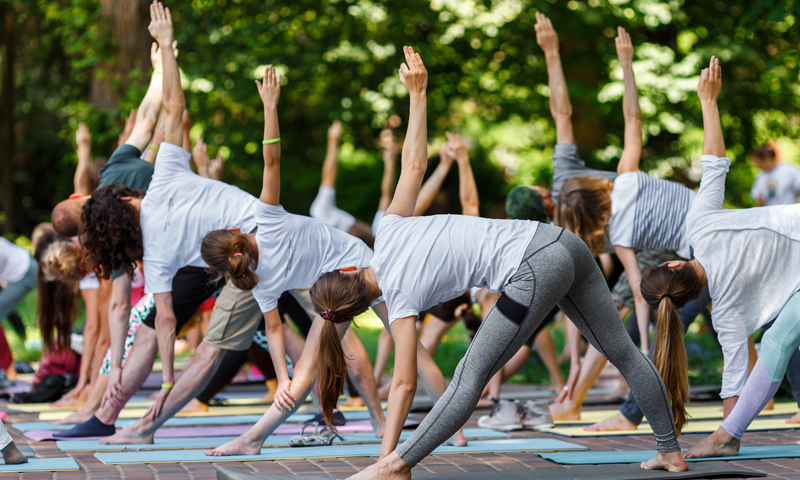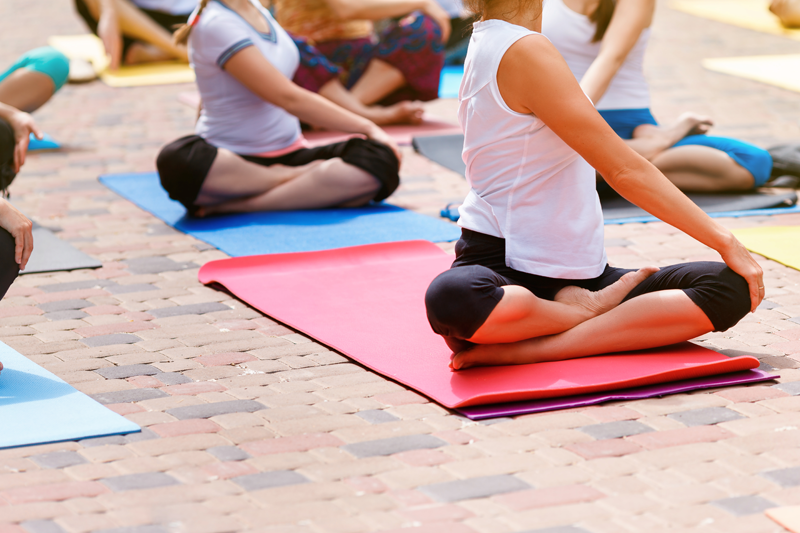
Does Yoga Help You Lose Weight?
22nd August 2019
What Music Should You Listen to During Your Yoga Session?
29th August 2019How Often Should You Exercise?

When it comes to working out, we all have our expectations and goals to meet. Maybe you walk for mental health benefits, lift weights to build muscle, or hit the yoga mat for some deep stretches. While any amount of exercise is beneficial, how often should you exercise in an ideal world? In this article, we explore this topic in more detail.
How Often Should You Exercise Each Week?
As you can imagine, there’s no single answer that’s right for everyone. Many factors contribute to how often you should exercise, including your age, lifestyle, and long-term goals. If you’re looking to increase your fitness, your ideal number of days depends on how active your lifestyle is. For instance, if you walk to work every day, you’ll probably need to work out less than someone who drives to the office. While your ideal amount of exercise will depend on your lifestyle, most people should aim to work out four to five days a week to improve their fitness and stay in shape.
What Should You Do?
To get the most from your exercise routine, try to combine cardio and strengthen training. If you want to work out five days per week, try two days of cardio, three days of strength training, and two days of active rest. If you only want to exercise four days a week, consider your long-term goals: if you want to improve endurance, cut a strength day. If you want to build muscle, skip a cardio day. If you want to do both, switch it around each week.
When planning your exercise routine, remember to be realistic about your schedule. If five days seems feasible, great! If you’re pushed for time as it is, begin with four and work your way up if time permits.
Strength Training – 2-3 Times Per Week
There are many benefits to strength training. First of all, it builds muscles and strengthens bones and joints. Secondly, increasing your muscle mass will increase your metabolic rate, helping to stay in shape long term.
To build muscle mass, try to work each muscle group a couple of times per week. In a two to three-day strength schedule, you should aim to work out the entire body. You’ll want to target the major muscle groups of the upper and lower body, including your quads, glutes, hamstrings, chest, shoulders, back, core and arms. While this may seem like a lot, certain areas can be worked simultaneously with compound exercises. Moves like lunges, squats and burpees work more than one muscle group at a time, so you’re essentially killing two birds with one stone. Compound exercises also target the core, so you’ll be working towards toned abs as you move. For best results, a strength-training session should last between 45 and 60 minutes. To prevent injury, always remember to warm up before you begin and use foam rolling at the end of your workout.

Cardio – 2-3 Times Per Week
While strength training is important, cardio also has its place in a balanced exercise regime. As cardio keeps your circulatory system healthy, it helps you to recover faster after exercise and keeps your endurance up. It also boosts your CO2 max, which helps the body to utilise oxygen.
When it comes to cardio, there’s a ton of options to choose from: an outdoor run, time on the treadmill, or even an intense sports game or exercise class. Whether or not exercise is cardiovascular depends on how much it raises your heart rate and how long you’re doing it for. Target heart rates are different for everybody, but a good number to aim for during cardio exercise is between 120 and 160 beats per minute. For best results, your heart rate should stay at this number for 45 to 60 minutes.
Many people enjoy using functional movement to keep their heart rate elevated. While kettlebells are used in strength training, they have their place in cardio routine, too. To utilise kettlebells during cardio, try to do more reps within a certain time frame to keep your heart rate up. This way, you can get in your cardio workout whilst also improving your muscle mass and agility.
For best results, try to participate in 150 minutes of moderate to intense cardio activity per week. How you split this up will depend on what type of exercise you’re doing. Depending on your preference, choose between shorter HIIT workouts and longer, steady-state sessions.
Rest Days – 2 Per Week
Rest days are essential in any exercise schedule. Taking time out allows your body to recover and rebuild so you can return your workouts refreshed and recharged. If possible, a rest day should be considered active recovery. This means that you don’t have to break a serious sweat, but you should try to do something. Rest days aren’t just about physical recovery, they’re also about mental. Doing light exercise that you enjoy is great for your mental health and also assists in residual fatigue.
Whether you take a short walk or just do some stretching, active recovery should get you moving but shouldn’t require too much effort. You could also participate in a restorative class, like a relaxed mat Pilates session or some gentle yoga. Whatever you choose to do on your rest days, aim to move for between 30 and 60 minutes.
In Summary
How often you should exercise will depend on your age, lifestyle, and long-term goals. On average, most people should aim for four to five exercise sessions per week, each lasting around 60 minutes. To allow the body time to relax and recharge, rest days are essential. During your rest days, assist residual fatigue with a light workout that you enjoy. To clear a cluttered mind, take a gentle stroll through your local park. To release tension from the body, put on your yoga pants and practice a restorative routine.

